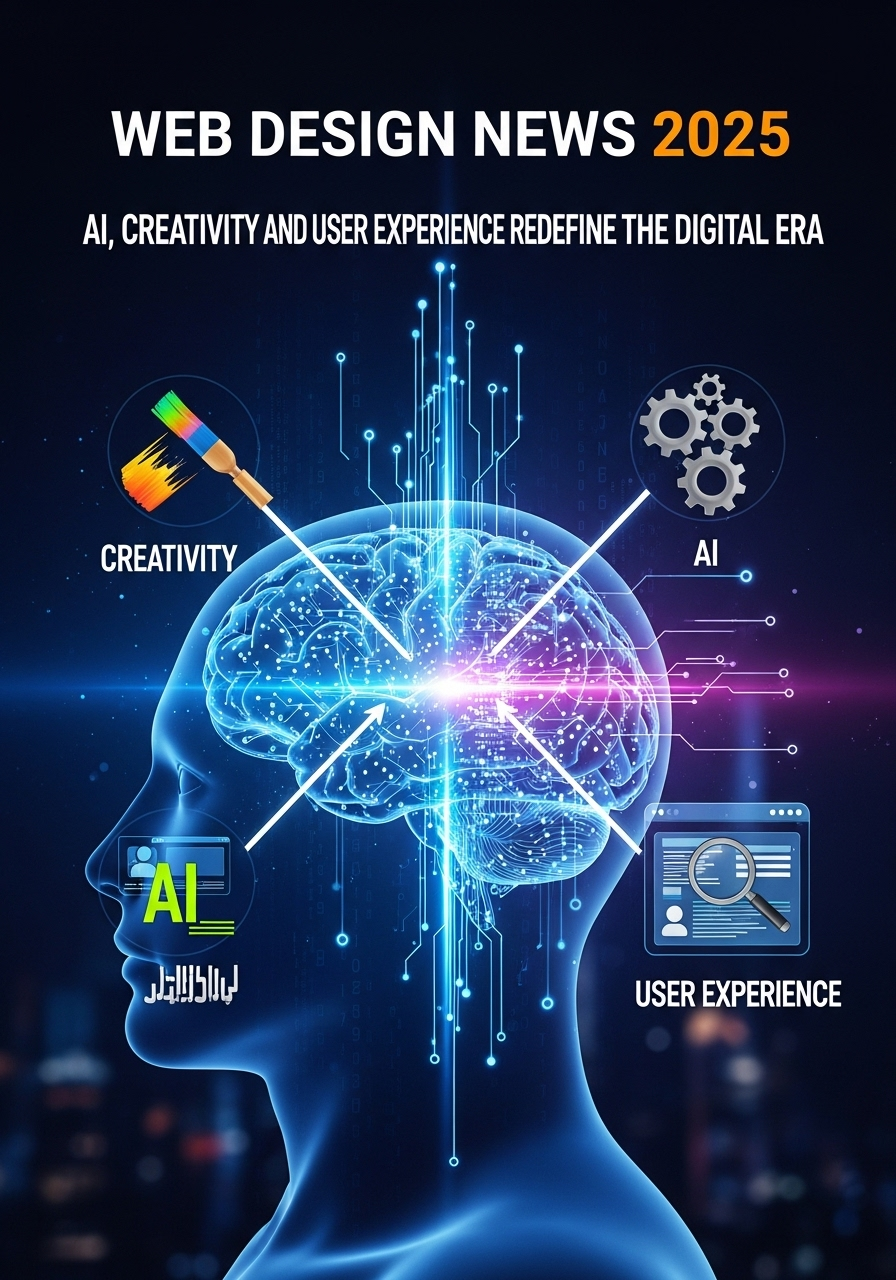Web Design News 2025: AI, Creativity, and User Experience Redefine the Digital Era
Introduction
The world of web design is evolving faster than ever in 2025.
Thanks to Artificial Intelligence, automation, and human-centered creativity, websites are no longer static digital spaces — they’re intelligent, personalized experiences that adapt to each visitor.
This year, the focus is shifting toward AI-powered design tools, immersive visuals, and seamless UX performance that bridge design with innovation.
1. AI Becomes the Designer’s Best Partner
AI is now an essential part of modern web design.
Tools like Hostinger AI Website Builder, Framer AI, and Adobe Firefly are empowering designers to create complete, SEO-optimized sites in minutes.
These systems analyze user behavior, color psychology, and branding elements to generate layouts that are not only visually stunning but also conversion-driven.
💡 Insight: Over 70% of web designers now use AI-assisted tools for layout generation, content writing, and image creation.
2. Minimalist and Clean Aesthetics Stay Strong
In 2025, minimalism remains a dominant design language — but with a twist.
Designers are combining simplicity with dynamic motion, subtle gradients, and fluid typography to create sites that are both elegant and interactive.
The goal? Clarity, speed, and emotional connection.
3. Rise of 3D and Interactive Experiences
With the advancement of WebGL, Three.js, and motion design frameworks, web experiences have become more engaging than ever.
Brands are using 3D product previews, scroll-based animations, and interactive storytelling to hold visitors’ attention and improve user engagement.
🧠 Trend: “Micro-interactions” — small animations triggered by clicks, scrolls, or hovers — are becoming a key UX differentiator.
4. Dark Mode and Adaptive Themes Dominate
Dark mode continues to be a design favorite in 2025.
Beyond aesthetics, it enhances readability, reduces eye strain, and aligns with users’ device preferences.
Many websites now feature adaptive color schemes that switch automatically between light and dark modes based on time or user settings.
5. Accessibility and Inclusive Design Take Priority
Accessibility is no longer an afterthought — it’s a must.
Web designers are focusing on WCAG-compliant layouts, high-contrast text, keyboard navigation, and AI-powered accessibility checkers.
This shift ensures inclusivity, expanding digital reach for all users, regardless of ability.
♿ Fact: 1 in 5 users benefit directly from accessible design features — improving overall user experience for everyone.
6. Performance and SEO Integration
In 2025, beautiful design isn’t enough — websites must perform flawlessly.
Designers are working closely with developers to enhance Core Web Vitals, optimize images, and implement AI-driven SEO tools that analyze and improve performance in real time.
⚙️ Pro Tip: Websites that load in under 2.5 seconds achieve 36% higher conversion rates.
7. Personalized User Interfaces
Personalization is a defining trend this year.
AI-driven sites now adapt layouts, content, and product suggestions based on visitor data and browsing habits.
This creates custom-tailored experiences that increase engagement, satisfaction, and sales.

